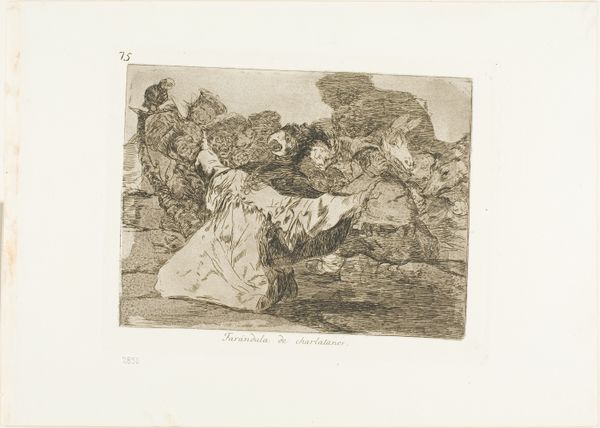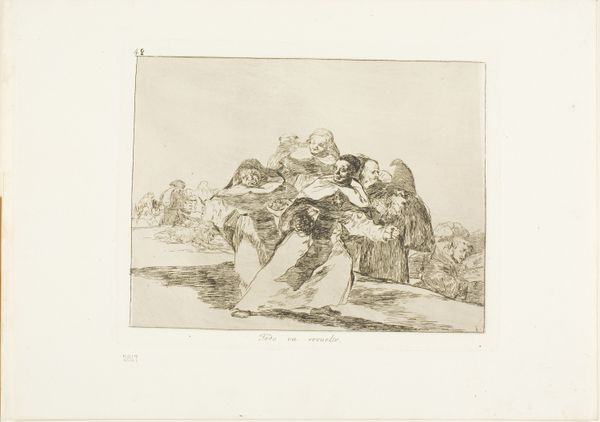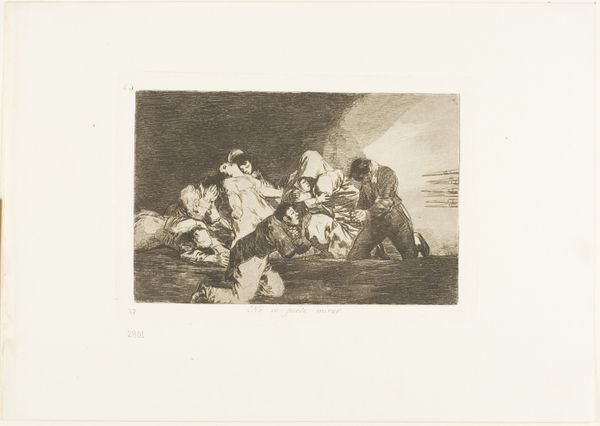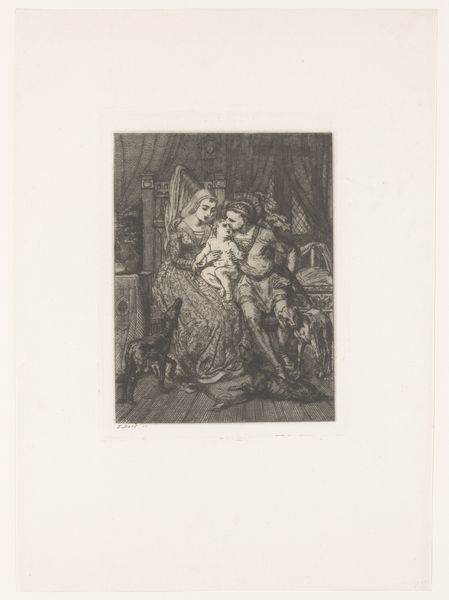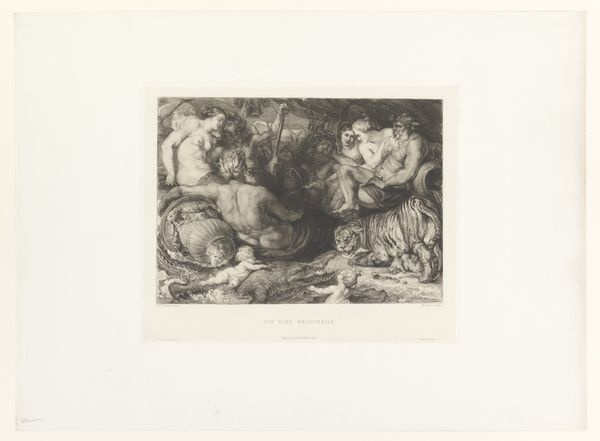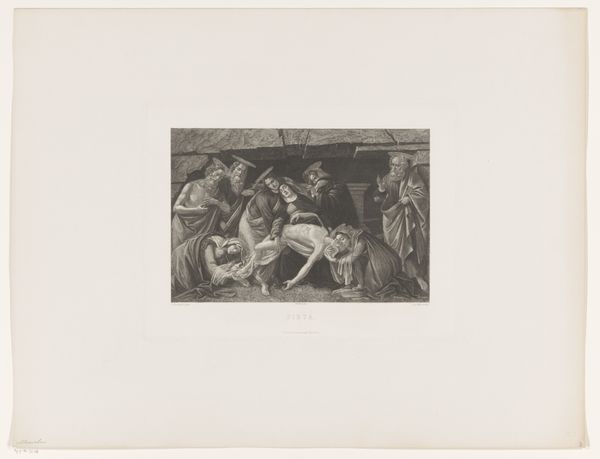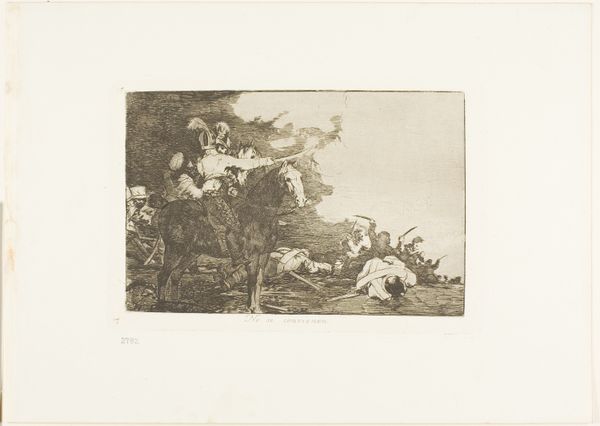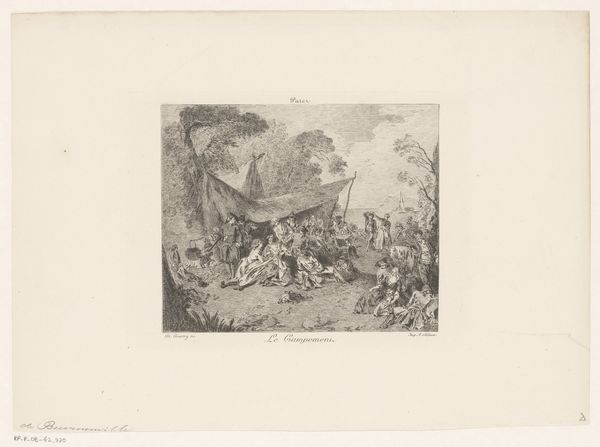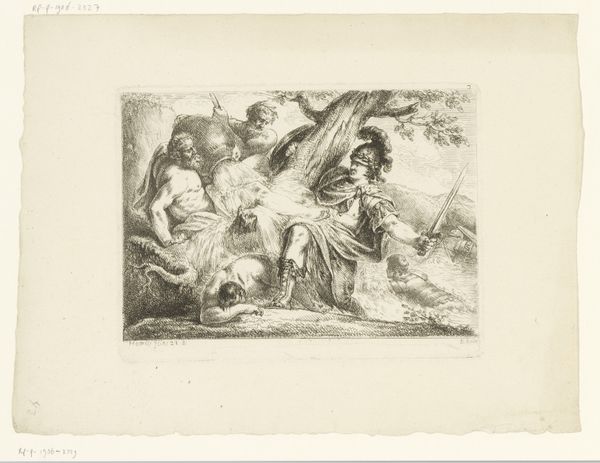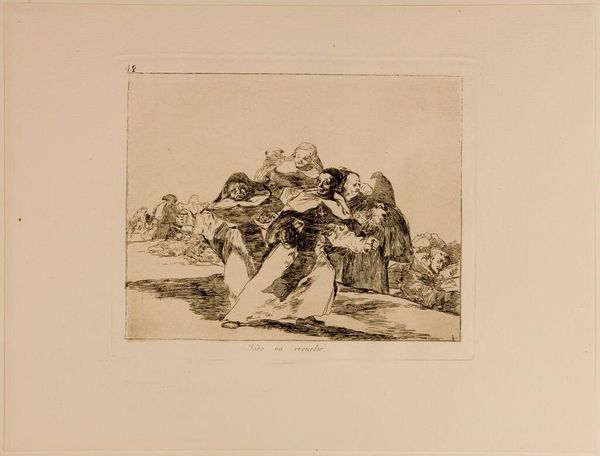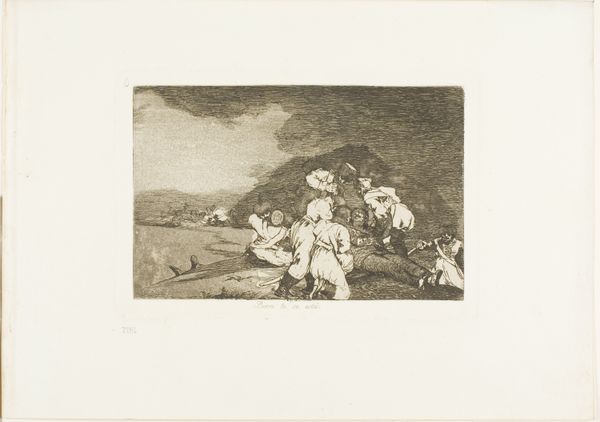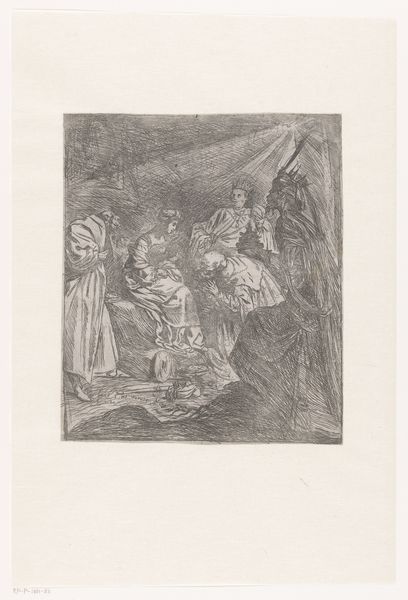
Truth has died, plate 79 from The Disasters of War Possibly 1815 - 1863
0:00
0:00
drawing, print, etching, paper
#
drawing
#
aged paper
#
toned paper
#
narrative-art
#
ink paper printed
# print
#
etching
#
war
#
figuration
#
paper
#
romanticism
#
history-painting
Dimensions: 145 × 182 mm (image); 170 × 215 mm (plate); 240 × 335 mm (sheet)
Copyright: Public Domain
Francisco Goya created this etching, "Truth has died," as part of his series *The Disasters of War*. It’s an indictment of the atrocities committed during the Peninsular War in Spain in the early 19th century, specifically Napoleon's invasion. Here, Goya uses the visual language of martyrdom to express the death of truth in times of conflict. We see a female figure lying prone on the ground, surrounded by a crowd of horrified onlookers. Her body emanates light, which evokes Christian iconography. But instead of angels and saints, the crowd is made up of shadowy figures, whose faces contort into expressions of anguish, fear, or denial. Goya worked as a court painter for years, so he was deeply familiar with the political machinations of the Spanish state. In this print, he subverts this role, turning his critical eye toward the institutions of power and the violence they perpetrate. By studying Goya's work in its historical context, through primary sources and scholarly analysis, we can better understand the complex relationship between art, politics, and social conscience.
Comments
No comments
Be the first to comment and join the conversation on the ultimate creative platform.
